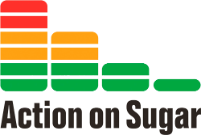Understanding food labels
It is recommended that sugar should make up no more than 5% of our daily energy intake. This is equivalent to 7 teaspoons (30g) of added free sugars for an adult. However, we eat more than double this amount each day, hence why checking product labels when shopping is a useful tool for working out how much sugar you are eating.
You can find out if the food you buy for you and your family is high in sugars by looking at the nutritional information on the label. Checking food labels allows you to compare brands, varieties and flavours of products and choose those that are lower in sugars. Adding up the amount of sugars in the products you eat throughout the day will give you an idea of the amount of sugars you are eating.
Foods low in sugars have less than 5.0g /100g
Foods high in sugars have more than 22.5g / 100g OR more than 27.0g sugars / portion
Nutritional information can usually be found on the back of product packaging; however some companies have made it easier to see by using either colour-coded labelling or Guideline Daily Amounts on the front of packaging.
Colour-coded labelling makes it easy to see at a glance if a product is high (red), medium (amber) or low (green) in certain nutrients including sugars. The amount of these nutrients in grams per serving is also stated. Products which are green can be eaten freely and amber products are usually fine but you should try to avoid the products with a red traffic light.
Reference Intakes (RIs) are general guidelines for the amount of certain nutrients that you should not be exceeding in a day. Products using this system will state the percentage each nutrient contributes to the total RI for that nutrient. Remember the RI for sugars is a maximum of the total daily intake and not of the recommended maximum for free sugars (30g). If you’re buying for children remember that the RIs for children are far lower than for adults.
Portion sizes:
When sugars are given per portion, you will need to check the portion size stated on the packaging to see if this is similar to the amount that you or your child will actually eat/drink. For example, a label may state that a portion is one quarter of the product but realistically you may consume the whole product. If this is the case you will need to work out the amount of sugars you are eating in total.
When sugars are only given per 100g, you will need to work out the amount of sugars in a portion. You can do this by thinking about how much of the product you or your child will be eating in relation to both the pack size and 100g/100ml i.e. whether this is more or less than 100g. Look at the weight and size of the packet as a guide.
Sugary drinks:
Sugary drinks are an important source of sugars intake – up to 42% of our daily sugars intake. Many soft drinks are laden with added sugars, contributing to a high sugar intake with no nutritional value. It is very easy to consume sugary drinks because of the fact that they give no feeling of satiety. Equally, many sugary drinks are packaged in bottles that are equivalent to two or more portion sizes. This is why we must be particularly vigilant when buying sugary drinks.
It is important to remember that the colour-coded labelling for sugary drinks is slightly different to the labelling for foods.
Drinks low in sugars have less than 2.5g /100ml
Drinks high in sugars have more than 11.25g / 100ml OR more than 13.5g sugars / portion
HOW MUCH SUGAR IS IN YOUR FOOD/DRINK?
Step 1 – Calculate amount of sugars per gram by dividing the amount of sugars per 100g OR 100ml by 100.
Step 2 – Check the weight of a recommended portion as stated on the pack.
Step 3 – Work out the amount of there is per portion by multiplying the figures from step 1 and 2.


